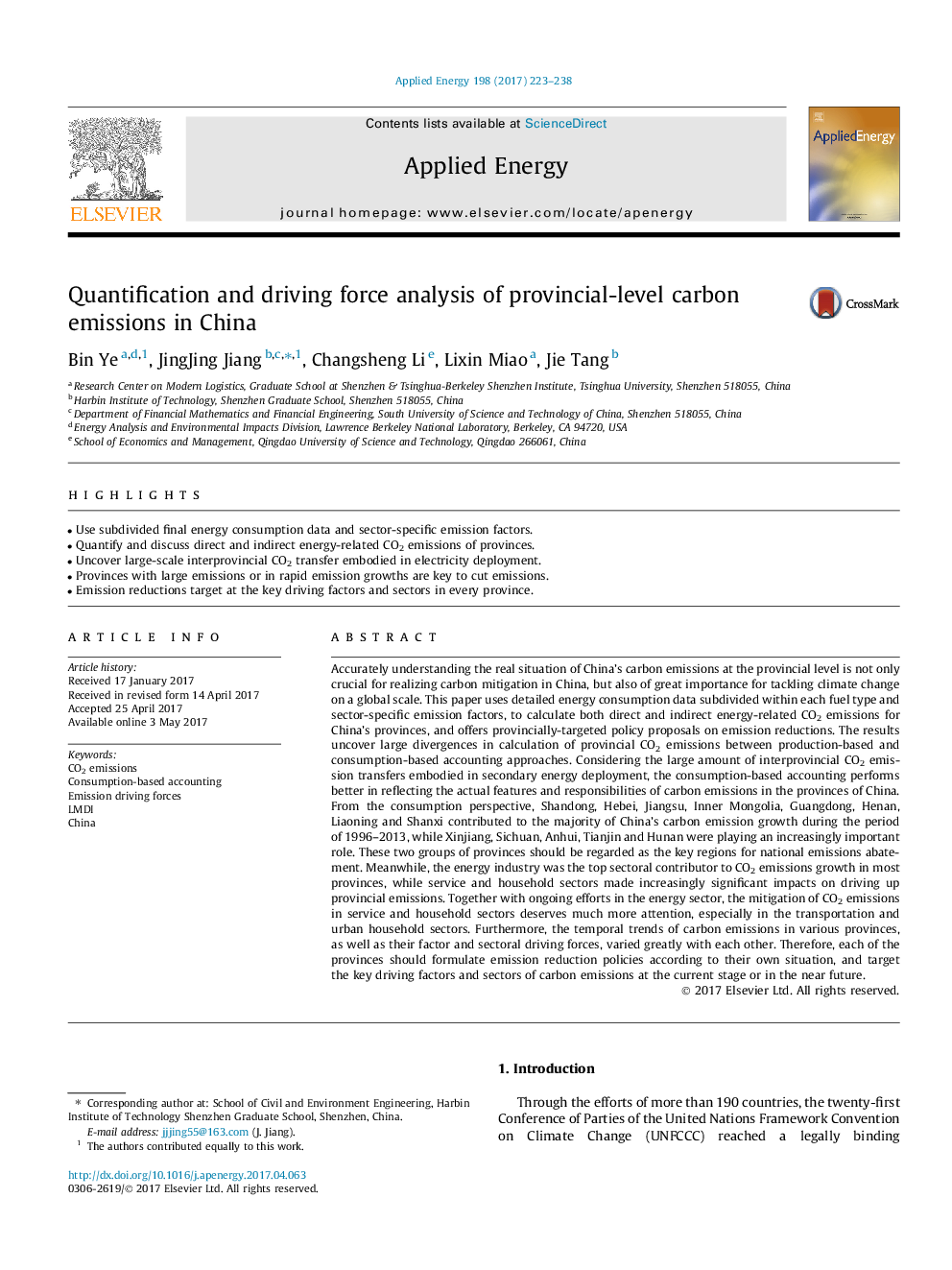| Article ID | Journal | Published Year | Pages | File Type |
|---|---|---|---|---|
| 4911088 | Applied Energy | 2017 | 16 Pages |
Abstract
Accurately understanding the real situation of China's carbon emissions at the provincial level is not only crucial for realizing carbon mitigation in China, but also of great importance for tackling climate change on a global scale. This paper uses detailed energy consumption data subdivided within each fuel type and sector-specific emission factors, to calculate both direct and indirect energy-related CO2 emissions for China's provinces, and offers provincially-targeted policy proposals on emission reductions. The results uncover large divergences in calculation of provincial CO2 emissions between production-based and consumption-based accounting approaches. Considering the large amount of interprovincial CO2 emission transfers embodied in secondary energy deployment, the consumption-based accounting performs better in reflecting the actual features and responsibilities of carbon emissions in the provinces of China. From the consumption perspective, Shandong, Hebei, Jiangsu, Inner Mongolia, Guangdong, Henan, Liaoning and Shanxi contributed to the majority of China's carbon emission growth during the period of 1996-2013, while Xinjiang, Sichuan, Anhui, Tianjin and Hunan were playing an increasingly important role. These two groups of provinces should be regarded as the key regions for national emissions abatement. Meanwhile, the energy industry was the top sectoral contributor to CO2 emissions growth in most provinces, while service and household sectors made increasingly significant impacts on driving up provincial emissions. Together with ongoing efforts in the energy sector, the mitigation of CO2 emissions in service and household sectors deserves much more attention, especially in the transportation and urban household sectors. Furthermore, the temporal trends of carbon emissions in various provinces, as well as their factor and sectoral driving forces, varied greatly with each other. Therefore, each of the provinces should formulate emission reduction policies according to their own situation, and target the key driving factors and sectors of carbon emissions at the current stage or in the near future.
Related Topics
Physical Sciences and Engineering
Energy
Energy Engineering and Power Technology
Authors
Bin Ye, JingJing Jiang, Changsheng Li, Lixin Miao, Jie Tang,
